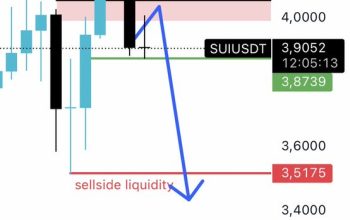The Cryptocurrency Market: A Dynamic Landscape
Imagine stepping into a world where digital currencies reign supreme, where fortunes can be made overnight, and where innovation is the only constant. Welcome to the cryptocurrency market, a realm that has captivated the imagination of investors and technologists alike. As we delve into the latest trends and insights, it’s essential to understand the underlying factors driving this digital revolution. Let’s explore the key developments and their implications.
The Rise of Bitcoin and Altcoins
Bitcoin’s Performance
Bitcoin, the trailblazer of cryptocurrencies, continues to showcase its resilience and potential for substantial gains. In April 2025, Bitcoin saw a remarkable surge, climbing 13.81%, slightly above its historical April average of 13.04% [1]. This performance underscores Bitcoin’s enduring appeal as a store of value and a hedge against traditional financial market volatility. Several factors contributed to this surge, including increased institutional adoption, regulatory clarity, and growing acceptance among retail investors.
Institutional investors, such as hedge funds and asset management firms, have increasingly recognized Bitcoin as a legitimate asset class. This shift has led to significant inflows into Bitcoin investment products, further bolstering its price. Additionally, regulatory bodies have begun to provide clearer guidelines for cryptocurrency operations, reducing uncertainty and attracting more investors. Retail investors, drawn by the potential for high returns, have also played a crucial role in driving Bitcoin’s price upward.
Altcoins: The Next Big Thing?
While Bitcoin dominates the headlines, altcoins are making significant strides. For instance, the Trump-backed stablecoin USD1 surpassed $2 billion in market cap within 24 hours [3]. This rapid growth highlights the potential of stablecoins to provide stability and liquidity in the cryptocurrency market. Stablecoins, pegged to stable assets like the US dollar, offer a haven for investors seeking to avoid the volatility of other cryptocurrencies.
Moreover, the filing of a $DOGE ETF by 21Shares with Nasdaq [5] indicates a growing interest in meme coins and their potential to disrupt traditional financial markets. Meme coins, often started as jokes, have gained a dedicated following and significant market capitalization. The Dogecoin ETF, if approved, could provide investors with an easier way to gain exposure to this niche market.
The Role of Blockchain Technology
Beyond Cryptocurrencies
Blockchain technology, the backbone of cryptocurrencies, is finding applications beyond digital currencies. Decentralized finance (DeFi) and non-fungible tokens (NFTs) are just a few examples of how blockchain is revolutionizing various industries. DeFi platforms offer financial services without the need for traditional intermediaries, enabling peer-to-peer lending, borrowing, and trading. This decentralization can lead to lower fees, faster transactions, and increased accessibility.
NFTs, on the other hand, provide a unique way to own and trade digital assets. From digital art to virtual real estate, NFTs represent ownership of a specific item on the blockchain. This technology has opened up new avenues for creators and collectors, allowing them to monetize digital content in ways that were previously impossible.
Regulatory Developments
Regulatory clarity is essential for the growth and stability of the cryptocurrency market. The recent approval of a public launch date for ProShares Trust’s $XRP ETF by the SEC [8] is a significant step towards mainstream adoption. This approval indicates a growing acceptance of cryptocurrencies by regulatory bodies, which can boost investor confidence and drive further growth in the market.
Regulatory bodies worldwide are increasingly recognizing the importance of cryptocurrencies and blockchain technology. As they develop clearer guidelines and regulations, the market is likely to see increased stability and growth. This regulatory clarity can attract more institutional investors, further legitimizing the cryptocurrency market.
Market Dynamics and Investor Sentiment
Volatility and Risk Management
The cryptocurrency market is known for its volatility, which can present both opportunities and risks. For example, $45.73 million was liquidated on $ALPACA, including one trader who lost $3.98 million [4]. Such incidents underscore the importance of risk management and the need for investors to be cautious and informed. Technical analysis and advanced trading strategies can help investors navigate the market’s volatility and make informed decisions.
Volatility in the cryptocurrency market can be attributed to several factors, including market sentiment, regulatory developments, and technological advancements. Investors must stay informed about these factors and use risk management tools, such as stop-loss orders and diversification, to protect their investments.
Collaborative Approaches
In the fast-paced world of cryptocurrency trading, collaboration and community engagement are crucial. Exclusive alpha channels and collaborative trading groups offer in-depth technical analysis and advanced strategies, helping traders stay ahead of the curve. These platforms provide a wealth of knowledge and support, making it easier for both novice and experienced traders to succeed in the market.
Collaborative trading groups often share insights, trading signals, and market analysis, helping members make more informed decisions. These communities can also provide emotional support, as trading can be a stressful and isolating experience. By joining these groups, traders can gain access to valuable resources and build a network of like-minded individuals.
The Future of Cryptocurrency
Innovations and Trends
As we look to the future, several trends are likely to shape the cryptocurrency market. The integration of blockchain technology into various industries, the growth of DeFi and NFTs, and the increasing acceptance of cryptocurrencies by regulatory bodies are just a few examples. Additionally, the development of new cryptocurrencies and the evolution of existing ones will continue to drive innovation and growth in the market.
Emerging technologies, such as the metaverse and Web3, are also likely to impact the cryptocurrency market. The metaverse, a virtual reality space, could create new opportunities for cryptocurrencies and NFTs. Web3, the next generation of the internet, aims to decentralize the web, further enhancing the potential of blockchain technology.
Challenges and Opportunities
While the cryptocurrency market offers immense opportunities, it also presents challenges. Regulatory uncertainty, market volatility, and security concerns are some of the hurdles that need to be addressed. However, with the right strategies and a collaborative approach, investors can navigate these challenges and capitalize on the market’s potential.
Regulatory uncertainty can make it difficult for investors to predict market movements. However, as regulatory bodies provide clearer guidelines, the market is likely to see increased stability. Market volatility can present both opportunities and risks, but investors can use risk management tools to protect their investments. Security concerns, such as hacking and fraud, can be mitigated through the use of secure wallets and two-factor authentication.
Conclusion: Embracing the Digital Revolution
The cryptocurrency market is a testament to the power of innovation and the potential of digital assets to reshape the financial landscape. As we continue to explore the latest trends and insights, it’s clear that the future of cryptocurrency is bright. By staying informed, embracing new technologies, and adopting a collaborative approach, investors can unlock the secrets of the cryptocurrency market and build generational wealth. The digital revolution is here, and it’s time to embrace it.
The cryptocurrency market is a dynamic and ever-evolving landscape, filled with opportunities and challenges. As we navigate this digital revolution, it’s essential to stay informed, adapt to new technologies, and collaborate with others. By doing so, we can unlock the full potential of the cryptocurrency market and build a prosperous future.
—




